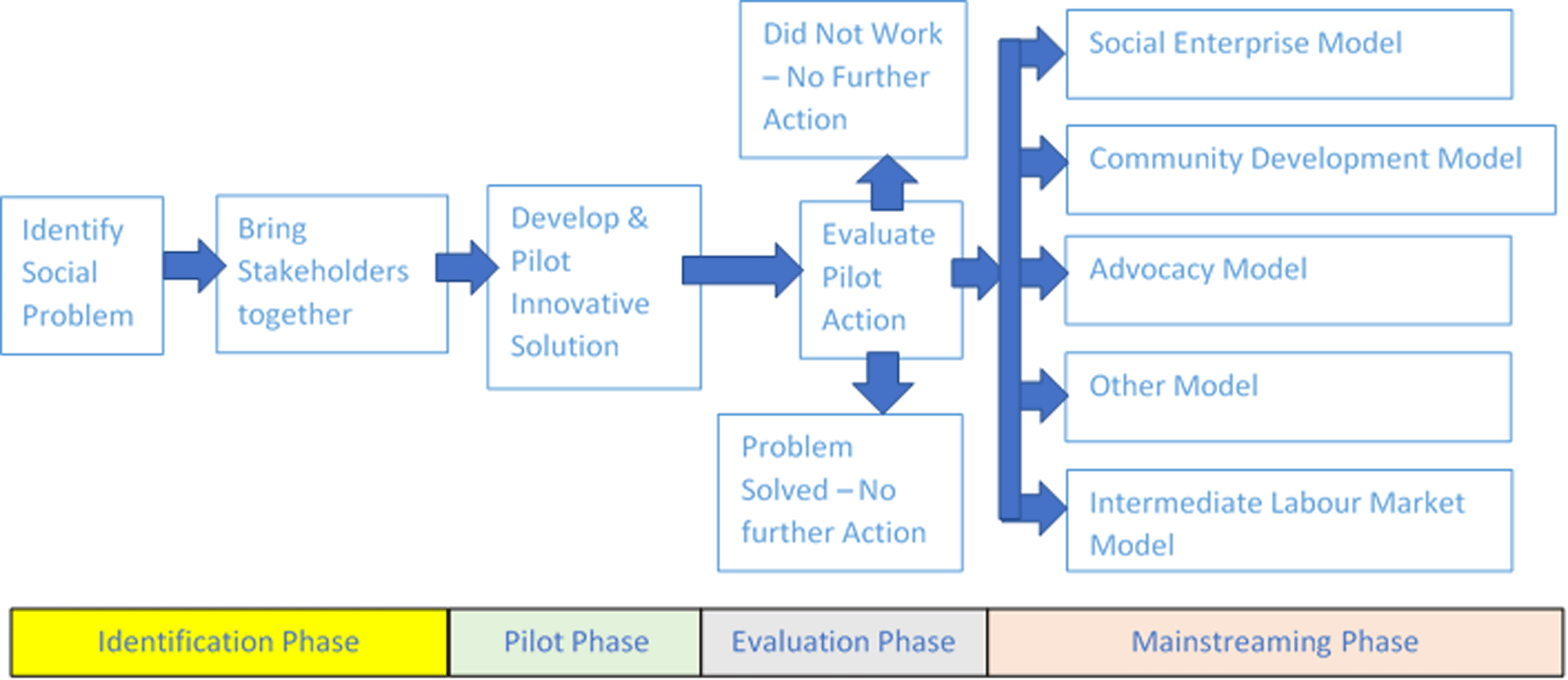What is the difference between social enterprise and social innovation? I ran a social enterprise for 10 years. I helped write and run a national pilot programme on social entrepreneurship. I did my PhD on social enterprises. I regularly collaborate with a social-innovation organisation. I should at this point know what I am talking about but I regularly hear from people who are unclear about the difference between social enterprise and social innovation. So, I thought I would give a quick guide to all thing’s social enterprise and social innovation; defining and differentiating between the different concepts. Let’s start with…
What is a Social Entrepreneur? This is someone who identifies a specific social or community-based need, identifies a solution to this social problem, brings other people and resources together to address the solution, sets up an organisation of some type to implement the solution and then manages this organisation to implement the solution and address the social issue. It is the entrepreneurship ‘identify, assess and implement process’ but done to address a social need rather than a commercial or profit-driven need.
What is a Social Enterprise? A social enterprise is an organisation set up and run to address a specific social need. They operate along normal business lines and deliver services to clients. They tend to be ‘nonprofit’ in nature, in that, any profits made get re-invested into the business rather than be taken out by shareholders. They tend to have nonprofit or charity status in most countries and are driven by a desire to solve the social need for which they were established.
What is Social Entrepreneurship? Social entrepreneurship is the process of identifying social needs, assessing their viability, bringing together the right people and resources and creating solutions for the social need and delivering necessary social goods and services to the people who need them. It is the application of the process of entrepreneurship to addressing social needs. If the clients cannot pay for the services directly, social enterprises will undertake other commercial activities to raise revenue to meet the financial shortfall or get a third party to pay for the services (the State in many countries).
What is a Charity? A charity is an organisation that operates to address a social problem and have forgiveness from many forms of taxation to allow them raise the money necessary to meet their service needs. Unlike social enterprises that use at their core a trading model, traditional charities raise money through fundraising, philanthropy and government grants to raise the money they need. That is not to say that social enterprises do not access grants and philanthropy but their core is based around a business model and delivery of goods and services to customers, not helping individuals and communities through charity and benevolence.
What is Social Innovation? Social innovation is the process of developing new and innovative solutions to social needs and challenges. Social innovation addresses the early-stages of the process: ideation, engagement, trial and error, testing and evaluation. Once a solution has been proven to work it tends to be mainstreamed and becomes a mature solution which can be a social enterprise, community-development organisation, an advocacy group or labour-market programme etc. Thus, the messy, chaotic period at the beginning of social organisations and addressing social needs and challenges is called social innovation.
We will do a more detailed article on social innovation later but this is a simple outline process of social innovation:

The important thing to note here is that social innovation focuses on the early stage of the process. Once the pilot is evaluated, new organisations tend to head down distinct paths that best suit their needs: social enterprise, community development, advocacy, intermediate labour-market programmes (ILM) or other models. In the social innovation phase, the solution to a social problem is flexible and multiple methods and approaches can be tried out. Thus, social innovation involved the identification, pilot and evaluation phases.
We will do a more in-depth article on social innovation soon but I hope that this helps clarify the different concepts.
Funding Master works with clients to develop, write and submit funding applications. The opinions set out here belong to the author(s), they constitute opinion and nothing is intended to constitute advice. The blog is authored by Funding Master’s founder and CEO, Dr. Ken Germaine. Please view his profile and please connect with him at his LInkedin profile here. Please contact us directly here if you have any questions on our work or this article. More information on our website here.

